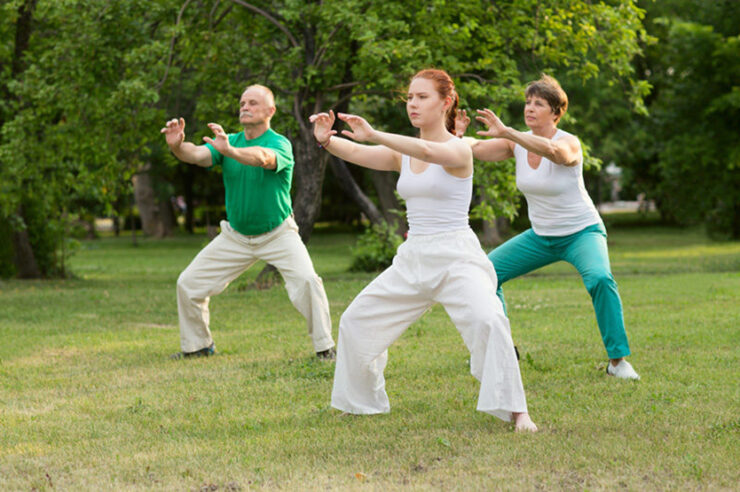An ancient martial art style called qigong exercise was created in China and has been practiced there for a long time to increase physical fitness and stamina. Qi Gong uses internal energy to enhance a person’s state of being. Qi directly means “inside energy,” and Gong generally refers to “to work with.” Qigong is a mind-body exercise that may be performed anywhere, anytime, without particular tools. It is frequently used to control stress and enhance psychological well-being and physical health.
Anxiety is the most typical response to stress, and mismanaged stress is terrible for your physical and mental health. It may impair immunological function and cause various health issues, including cancer, hypertension, cardiovascular disease, depression, lethargy, insomnia, headaches, stomachaches, and difficulty eating.
Self-care is the most effective strategy for reducing stress and anxiety. In recent years, more and more people have turned to alternative Medical Qigong Training for mind-body activities like managing their psychological tension or worry. Concentration, relaxation, meditation, controlled breathing, correct body posture, and movement are the fundamental elements of qigong practice. Anxiety can be reduced with qigong, a traditional Chinese exercise that includes movement, breathing, and meditation. The following qigong exercises could be helpful.
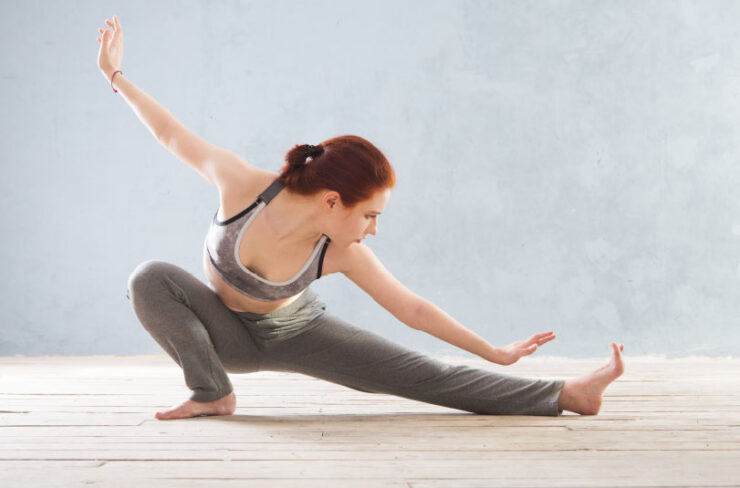
Three Quick Qigong Techniques To Calm Anxiety And Stress
With soft, fluid, yet complex motions, qigong supports the interdependent interaction between the body, breath, and mind. Each activity listed below encourages mindful movement and deep breathing, keeping a sense of calm, presence, and clarity. Do one exercise at a time if your break is only a few minutes long. For a complete Qigong experience, attempt all three if time permits.
The Mountain Peak Tiger Qigong (Heart, Lung, And Pericardium Meridians)
Tiger Climbs the Mountaintop Qigong, a component of the Five Animal Qigong system, emphasizes fluid, circular shoulder motions, and measured breathing to enlarge the arm meridians and synchronize their combined attributes of happiness, sadness, good connections, and emotional well-being.
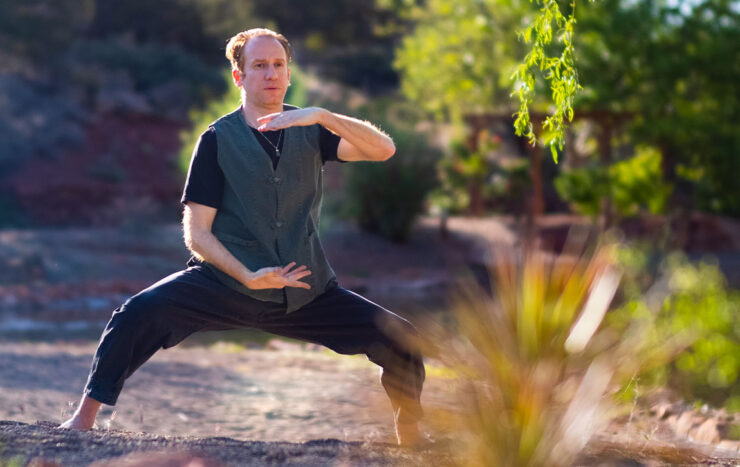
How To Do?
- Put your right hand behind your right-side waist and gently curl your fingers into claws.
- Step your left foot forward while keeping your left knee straight and your toes pointed forward.
- Move your right foot out at a 45-degree angle, and put weight on your right leg.
- Circle your right arm forward (palm down) and your left arm back while keeping your spine parallel to the ground (palm up).
- Keep your neck extended and look at the bottom while raising your hands in opposing directions. Next, open your left arm to the left and right to the right.
- Bring your left arm back as you turn your left foot out 45 degrees after stretching as far as possible.
- Move your arms in a circle so that your left arm moves forward and your right arm moves back (palm up) (palm down).
- Repeat the same arm movements on the opposite side to complete one repetition. Swing your arms and then twist them while breathing in and out. Make 6–10 repetitions.
Bear Captures Fish Qigong (Liver, Spleen, And Kidney Meridians)
Bear Catches Fish Qigong uses deep lunges and balance to establish a strong base, foster a sense of calm stability, and balance the meridians and emotions of the liver (anger) and spleen (worry).
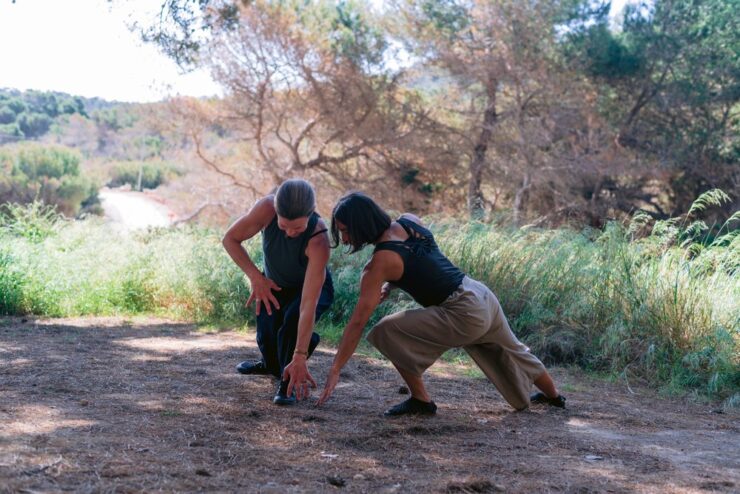
How To Do?
- Each finger’s first joint can be bent to form a soft bear claw.
- Turn your torso 45 degrees to the left while bending and raising your left knee.
- As far as you can comfortably move your left foot forward, lunge forward while bending your left knee while your right knee straightens.
- Reach your left hand to the outside of your left foot and straighten your elbow as you draw your chest forward until it is just over your left thigh.
- Keep your right elbow bent so that your right hand is level with your left knee while doing this.
- Press down with your left foot as you turn your shoulders and torso to the right to exit the position.
- While standing on your left leg, slowly raise your torso vertically.
- Repeat the process on your right side, bending and lifting your right knee. Inhale as you turn, and exhale as you decline. Repeat 6 to 10 times.
Draco Qigong (Kidney Meridian)
The deep postures used in Dragon Qigong, a form of the 5 Element series, expand the leg meridians and promote self-assurance, balance, and grounding. Along with balancing the arm meridians and the emotions they are connected to, Dragon Qigong also uses a spinal twist to balance the kidney meridian and its related feeling of fear.
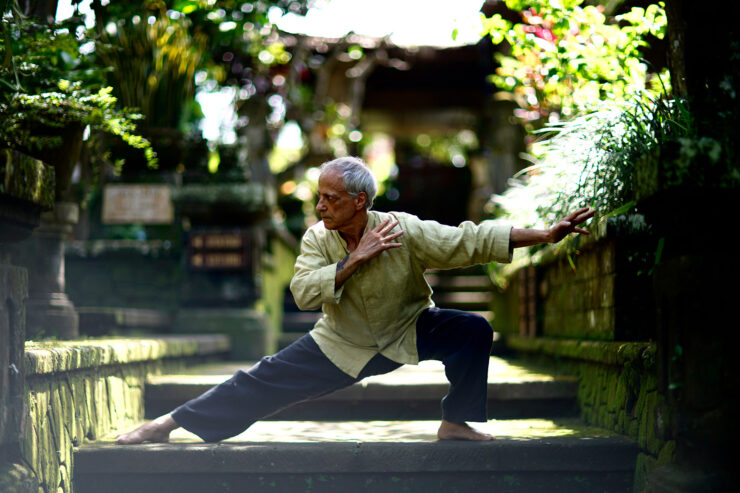
How To Do?
- Starting from a standing position, lift your arms to your chest and lower them back to your waist. Then, place your hands in front of your abdomen in the shape of a ball, with your right hand on top (palm down) and your left hand below (palm up).
- Step with your left foot out to the side, pointing your toes 90 degrees to the left, then lunge with your left knee bent.
- Turn your torso to the left while reaching back with your left hand toward your right foot and raising your palm to the sky.
- Take a slow, deep inhale and look toward your left hand.
- Return to standing with your feet at least shoulder-width apart after slowly rotating your torso back to the front.
- Again, position the hands so the left hand is on top and the right is underneath as if holding a ball.
- You can perform up to three repetitions of this sequence on the right side to complete one round.
Conclusion
A confident and upbeat attitude can significantly increase your chances of success in any endeavor. Your body and mind are intelligent beings with the capacity for development, equilibrium, and change. When stress and anxiety start to get the worse of you, these straightforward strategies are a terrific way to change your day. Realizing your feelings and setting aside thirty minutes to change your vibe is sometimes necessary.
According to preliminary research, Qigong may help healthy adults and people with chronic illnesses manage their depression and anxiety symptoms. Qigong is an easily adaptable mind-body exercise that may be conducted whenever and anywhere without special equipment. So, it is essential to promote Qigong extensively to enhance emotional well-being.

